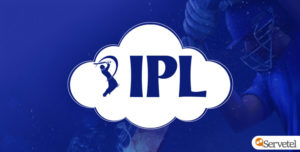Almost every industry today has adopted different kinds of personalised approaches in how it communicates with its customers.
Some of the major reasons that prevented companies from fully embracing different facets of personalised customer communication earlier were data privacy concerns, traditionally implemented systems with minimal automation, etc.
However, as far as personalisation in the communication process is concerned, a survey from Accenture reports that a whopping 83% of present-day consumers are willing to share their data in return for a more personalised experience.
With the pandemic, face-to-face interaction found itself in the backseat, making the need for personalised customer communication channels greater than ever before.
Why does BFSI need personalisation in their service operations?
Without an alternative that was both agile and well-secured, most institutions of the Banking, Financial Service and Insurance (BFSI) sector continued with offline communication infrastructure.
With most customer data recorded in silos, personalised customer communication became a tougher task due to lack of accessibility within existing channels. Additionally, this structure was further challenged with the coming of the coronavirus.
Most leaders in today’s IT sector firmly believe that personalisation in communication through the use of AI and bots is the future of the modern service industry.
The early emergence of cloud technology brought with it an air of scepticism for its claims on data security. However, with encryption and top-notch security features for cloud-based models, BFSI soon started incorporating cloud solutions in their operations.
Today, Artificial Intelligence and Machine Learning capabilities offer newer, safer and more diverse ways in which businesses can connect with their customers. These tools offer greater flexibility in channels used, accept different languages and provide easy access to information—for both customers and employees.
The COVID-19 pandemic has fuelled how widely cloud technologies are being used for business communications. Today, more and more financial institutions are looking at cloud telephony solutions and its features to offer enhanced personalised communications to their audience.
Explained below are some reliable strategies that can be used by the BFSI sector to improve current customer communication models:
1. Setting up a modern contact centre
In a market where the customer’s preferences are continually evolving, the need for newer, more personalised technological approaches is growing. Customers now expect their preferred brands and companies to remember their contact preferences—how they like to be contacted, when and through which medium.
A preference-oriented approach mainly branches out in two ways:
- The first is where customers are given access to a single communication channel by the company and;
- The second where, despite having multi-channel access, certain customers prefer a specific channel.
In India, a significant chunk of customers is based out of rural or semi-urban areas. Therefore, it is unfair to expect them to be tech-savvy or have high-speed, stable internet connections. It is the duty of the BFSI sector to train and empower their agents in ways that enable them to reach out to the customer base in the channels and languages that make them most comfortable.
It is imperative for businesses to work out a channel that delivers all important messages and facilitates regular, clear communication with their diverse base of customers.
In order to tread this path carefully, businesses and other institutions are heading into adopting the practice of setting up contact centres, with the aim of routing all their customer interactions.
Once a strong, dependable contact centre is set up,
- Important calls that were missed can be tracked and reached out to
- Calls can be recorded and analysed to improve customer-agent interactions
- Agents can keep a track of customer preferences—channels, time, medium—and add interpersonal touch points for a more genuine service offering.
2. Using Artificial Intelligence and support bots for customer communication
Once the BFSI sector works upon segregating siloed data into organised channels, AI and bot-based personalised communications can prove to be real game-changers for this industry.
While both AI and bot-based customer support are still in their nascent stages, their staticity can be done away with through more efficient organisation of customer data. This helps as the AI tools are best suited to analyse customer interactions and track history for every response.
Using the institution’s Customer Data Platform (CDP) to store information into AI-enable bots can be an effective first step in this process of digitalisation. If these tools are equipped with an intent prediction engine, the customer’s reason for calling and where they stand in their journey can be distinctly understood. Such information can also automatically route a customer call without requiring any manual inputs.
So, when a customer sounds frustrated with a bot in the initial stages of the call, a human support agent can interrupt and take over. This not only ensures that support agents are catering to customers who need them the most, but also reduces the caller’s manual effort.
Overall, this results in increased efficiency on the agent’s end and helps financial institutions boost up customer experiences with an overall reduction in energy, time and financial investments on lofty traditional phone systems.
3. Streamlining customer data using CDP
There exists a disconnection in the data collected through traditional methods to that collected through modern solutions such as cloud-based CRMs. Such a disconnect can result in a poor customer experience for a company.
A well-equipped and technologically advanced Customer Data Platform (CDP) can help financial institutions deal with the problem of fragmented and scattered customer data.
CDP is a centralised platform that organises data collected through different communication channels and helps in tracking, analysing and managing it. This helps companies in effectively streamlining the management of information while providing an elaborate view of everything they require to cater to their customer base.
Managing information in an organised CDP:
- Allows institutions to reach out to customers in ways and languages most preferred by them
- Helps the BFSI sector come up with models that enable effective and personalised customer communication
- The back and forth of customer data lets agents access customer history and other important information that they may require for refined communications.
- Helps understand wherein a business funnel each customer stands and the number of touchpoints they get involved with
Wrapping up
The future of customer interactions in every industry looks brighter with more innovative opportunities. While the pandemic is certainly a principal initiator for the move to more modern communication solutions, legacy industries, like that of the BFSI sector require some drastic infrastructural shifts.
In order to attain the best possible outcomes, the BFSI sector needs to come up with visions and strategies that consist of holistic growth and development, instead of continuing with the current siloed approaches to customer data management.
To keep up with these rapidly changing times, the banking sector has no option but to revamp traditional approaches in a way that helps them connect with their customers at a deeper and more personal level. This can happen with the power of cloud communications.
Harness the power of cloud telephony today. Contact Servetel at 1800-120-4132

















